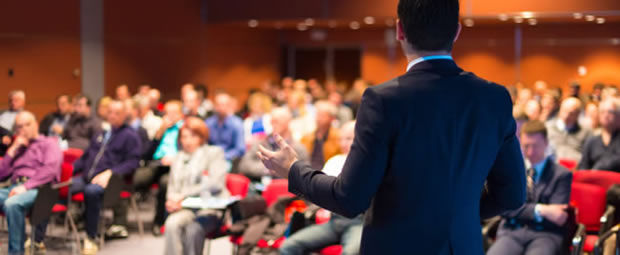
The right industry conference can be a game changer for your business, and when done the right way, it can present a goldmine of opportunities. However, with so many conferences and events taking place these days, it can be difficult to know where to spend your time and how to get the right return on investment (ROI).
In this post, we’ll dive into what to do before, during, and after industry conferences to ensure you’re making the most of your time.
What to Do Beforehand
Double Check Your Badge
One of your most important—and sometimes overlooked—assets for conferences is your badge. It’s your first impression, your key to access and interactions, and in some cases, your conversation starter. Before heading off, check to make sure that your name and company are spelled correctly in the conference system.
Bring Your Business Cards
If someone wants your information, you need to have something to give them. It’s important to have business cards, and to have a lot of them—you don’t want to be the person who runs out! Also, remember that people are getting a lot of these cards over the course of the conference, so make sure yours stands out by being interesting, conversation sparking, and memorable. At a minimum, try to have your picture on your business card, for those like me who remember faces better than names.
What to Do During
Meet and Interact with People
Conferences bring people from all around the world together, so you need to take advantage of that by engaging with peers, vendors, and those who are hosting the event. This is especially important in the MSP community. Industry conferences present an opportunity to network and learn from your peers, and discover what other MSPs are doing differently or similarly to you. At the same time, you have a chance to create a sort of speed-dating experience with key vendors, engaging with those you currently do business with or evaluating what else is out there that could benefit your business.
Take Actionable Notes
There’s a TON of content, statistics, industry trends, information on new releases, etc. shared at conferences. It can be hard to remember it all, so it’s helpful to jot down your thoughts as you listen to speakers and breakout sessions.
The key here is to make sure that when you’re taking notes, you’re thinking about how they’re going to translate into action items and next steps. Actionable notes are the best kind of notes: it ensures that when you get back to the office, you can effectively put your thoughts and learnings to good use.
What to Do After
Establish a Plan of Action
This all starts with sorting out your notes and the business cards you may have collected. If you followed my tip above, it should be easy for you to take away the specific action items from your conference notes and connect with the right team members to get to work.
For the personal connections you made, follow up with each person directly. But give it a two- to three-day buffer before reaching out, to account for travel and ensure they have time to settle back in and catch up on email and such. You can send them an email, reminding them what you spoke about and offer to meet for coffee. Or, simply connect with them on LinkedIn and any other social media they’re active on. Either way, staying in touch is crucial to getting the most out of your conference conversations.




0 comments
Write a comment